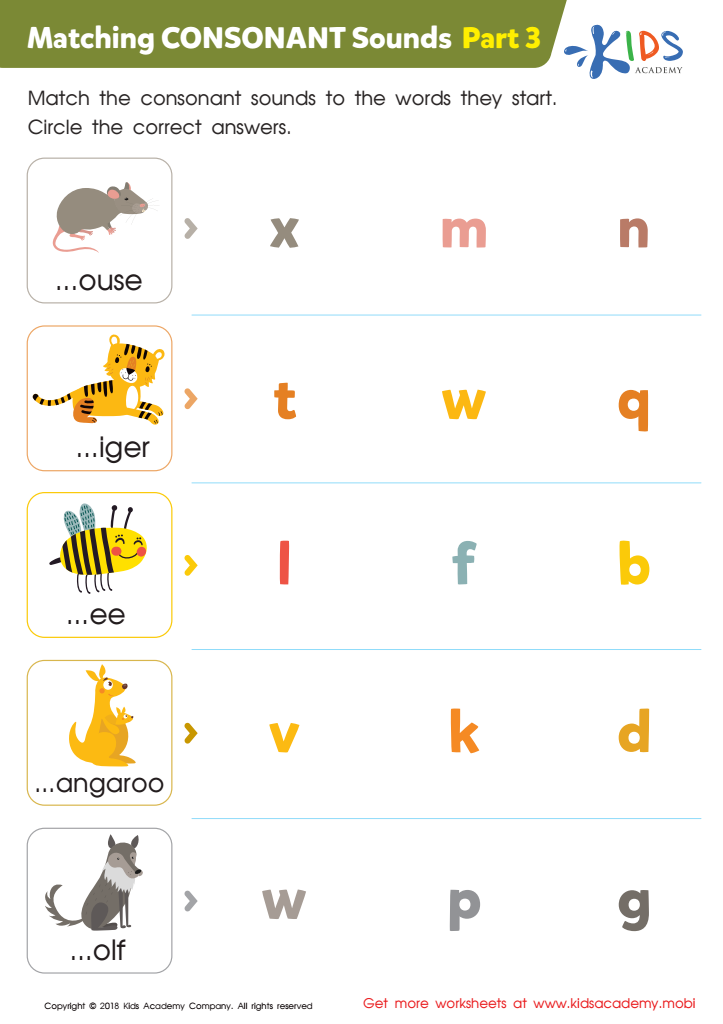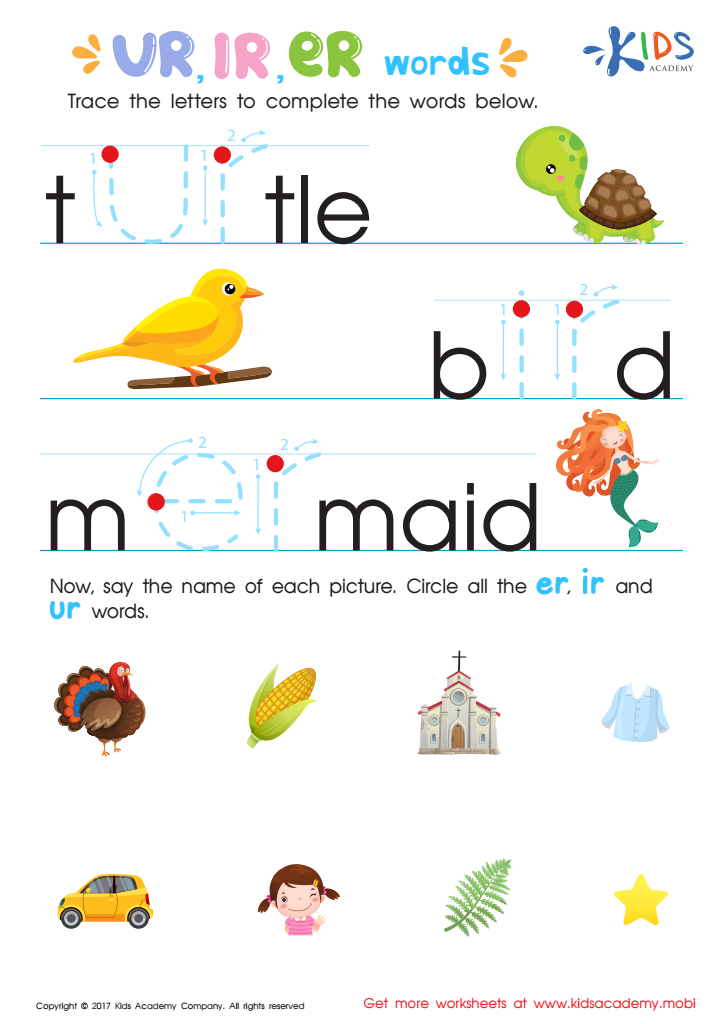Phonics recognition Normal Worksheets for Ages 5-7
14 filtered results
-
From - To
Discover our engaging Phonics Recognition Worksheets designed for children ages 5-7! These printable resources are perfect for enhancing phonics skills through fun, interactive activities. Each worksheet helps young learners develop their ability to recognize sounds, decode words, and build essential reading skills. With vibrant illustrations and relatable themes, students will enjoy practicing letter sounds, blends, and digraphs in a playful way. Ideal for classroom use or at-home learning, our worksheets cater to various learning styles and ensure an effective and enjoyable educational experience. Enhance literacy and boost confidence with our top-quality resources, aiming to make reading enjoyable and accessible for every child!


Letter K Sounds Worksheet


Letter Sounds: J Printable Worksheet


Sight Words with Blends Worksheet


Where Is the Digraph? Worksheet


Listen to the Sounds Worksheet


Matching Consonant Sounds: Part 3 Worksheet


Let's Count the Sounds Worksheet


Matching Consonant Sounds: Part 2 Worksheet


Reading: Long I and Short I Sound Maze Worksheet


Let's Check for «i» Sounds Worksheet


Sounds Are Everywhere! Worksheet


Phonics and Word Recognition: Assessment 1 ELA Worksheet


IR UR ER Words Worksheet


Match–Up Game: Beginning Sounds Worksheet
Phonics recognition is a crucial skill for children aged 5 to 7 as it lays the foundation for reading proficiency, which is essential for academic success and lifelong learning. During these formative years, children begin to associate sounds with letters and combinations of letters, enabling them to decode words effectively. Understanding phonics helps children transition from recognizing sight words to applying their knowledge to new words independently.
When parents and teachers prioritize phonics, they are supporting children's ability to read with confidence, which boosts comprehension and enhances overall literacy. Early reading skills correlate with future academic achievement, making phonics instruction a critical component of early education.
Furthermore, phonics recognition fosters a love for reading by helping children experience success in reading independently. This can inspire curiosity, creativity, and a propensity to learn more about the world around them. As these children gain confidence, they are more likely to engage with a variety of texts and explore diverse subjects.
Ultimately, by focusing on phonics recognition, parents and teachers empower children with the tools they need to become successful readers, build their self-esteem, and develop a positive attitude toward education that will benefit them across their lifetime.
 Assign to My Students
Assign to My Students
















